
Lokesh Chandra

71 books




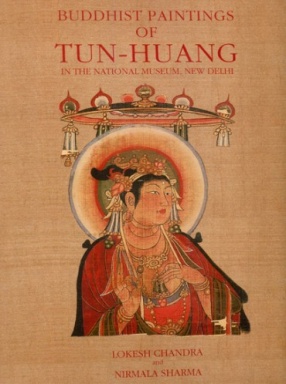









The book begins with a new interpretation of the history and nomenclature of Nalanda. Magadha as the inspiration of Buddhist art, the political perceptions of Asoka, Oeso on Kushan coins, the name Konarka as a Tocharian word, Sanskrit and Indology as the Indian Renaissance, Sharada and Kangra scripts, the word Roma for gypsies and references to them in Indian sources are some highlights of Indian art and Buddhism. Bhæumiputra in Khotan, Buddhist sites in ...

The Charisma of Tibet is the flowering (padma) of the jewelline (mani) Dharma (om) in its depths (hum). This book surveys problems beginning with the statue of the Chinese Queen in the Potala, the role of Bactrians, the original home and Pure Land of Padmasambhava, the independence of Tibet throughout history, and so on. The 5th chapter begins with Tibet as the source of all the major rivers of Asia, the 6th details historical works, the 7th is the palaeography ...


It chronicles the researches of Prof. Raghu Vira, Prof. Lokesh Chandra and their colleagues on the cultural interactions between India and China for the last two thousand years. Philosophy, ritual, painting, sculptures, political concepts etc that evolved in China from the Buddhist world view have been detailed. The expediton of Prof. Raghu Vira to China in 1955 at the invitation of Premier Chou Enlai has been described at length for the first time. Sanskrit ...

The Tun-huang caves are the sparkle of Buddhist art over the centuries, situated at the foot of the Mountain of Singing Sands, they are the brush of the Buddha, where an itinerant monk Yueh-ts’un watched the iridescent peaks in the sheen of blue satin, settled down to excavate the first cave in AD344, and to paint its walls with colours brought by birds as the folk legends has it. Speechless with joy, he had began a long journey of a thousand years of ...

The Nispannayogavali (NSP) has been a major source for the identification and symbolism of the mandalas for the last sixty years. It was written by Abhayakaragupta who headed the great Vikramasila monastery. Born as the son of the King of Singala, he was ordained in the Sarvastivada tradition, and studied the Tantras at Nalanda and Vikramasila. Vajrayogini appeared to him and said: write an extensive ritual of mandalas. He authored a trilogy of texts on the ...

This memoir chronicles a sparse population, structures shattered by time, and roving officials of the British Crown trying to comprehend the mysteries of the vast land of India with its divine dignity conversing with ruins of imposing architectural buildings. The author Lt Col. Forrest made coloured drawings of ancient monuments on the spot to see the beauty of their inner form beyond what is seen by the bodily eye. Some facts given by Forrest have become ...

This is a study of different aspects of Buddhism in the course of its evolution and decline in the Indian subcontinent, China, Japan and South-east Asia. Using comparative archaeological observations of the Buddhist cosmopolis to explain regional variations in Buddhist iconography and culture, internalisation and innovation in Buddhist art, mandalas of Vairocana and Trika Shaivism of Kashmir, it showcases the development and qualitative changes in iconography ...

This book chronicles the role of Buddhism in the formation of the state, literature, art, and beginnings of technology in Japan from the sixth century down to our times. From the name of the country as Nippon arising out of the golden light of the rising sun in the SuvarŸabh†sottamasæutra; down to the Indic sequence of the kana syllabary, or the kanji of the sutras becoming the terminology of the yosai in the 19th century, from the ha/ku of ...
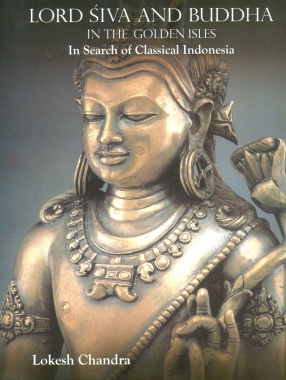
This volumes narrates the shared culture of India and Indonesia for fifteen centuries in the domains of polity and societal norms, language and literature, architectonics and aesthetics. This inter-flow began in the first century but is documented by the inscriptions of Mulavarman and Purnavarnam around 400 AC. Indonesia shared with India words and kavyas, Mahabharata and Ramayana, Saiva and Buddhist philosophy, wayang and lakons, sculptures and paintings, dance ...
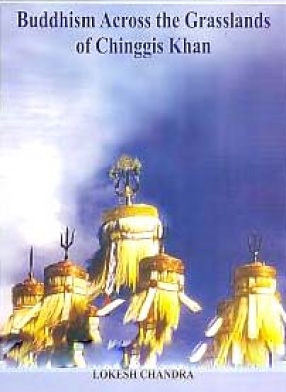
This book is a survey of Buddhist art, literature, monasteries and general history of Mongolian lands, the transcreation of the 6000 plus works in the Kanjur and Tanjur, highlights of Lamaism across the centuries, the writing of 220 philosophical, ritual, hagiographical and historical works under the Manchu dynasty, and so on. The development continued till 1920s when the communists took over. It also relates the destruction of 750 large monasteries uprooted down ...

A fundamental work for the philosophic and artistic understanding of the theory and graphic representation of the mandalas in general and especially in the Shingon tradition of Japan. Details the philosophy, patriarchs and sacred canon of Mantrayana, its ulterior development into two branches in Japan, the nature and different kinds of mandalas, as well as their classification and essential principles. The twin mandalas of Vairocana based on the ...

This catalogue of Sanskrit manuscripts in the National Archives of India, lists codices which were transferred from the personal library of H.H. the Maharaja of Jammu and Kashmir to the Archives when the State acceded to India. They contain unknown texts as well as ancient versions of known texts in the Sharada script. Sharada manuscripts were insulated in the inaccessible valley of Kashmir and thus they have preserved striking original readings. The names of the ...

This volume contains the minor writings of Prof. Lokesh Chandra on Buddhism, the role of women therein, and the opening up of the vast Buddhist literature in the Tibetan Canon. He goes on to a personal narrative of his sinological studies, followed by identification of the votive banners of Tun-huang and the Karma-vibhanga. Culture and civilization as interactive diversities in the Sino-Indian context, the lives of early Buddhist masters in the catalogue of ...

This Life of Lord Buddha is a reproduction of the Shih-chia ju-lai ying-hua shih-chi, a collection of important episodes in the life of Lord Buddha, cited from different Sutras translated into Chinese from the 3rd to the 13th century. The citations are illustrated on opposite pages, so that the pious could visualise the Dharma of the Tathagata. They are `Visual Dharma'. The Chinese has been translated into English. It was compiled by monk Pao-ch `eng during ...

This volume is a facsimile edition of two ancient Sanskrit manuscripts from Tibet, which were actually used by Indian acaryas and Tibetan lotsavas for translation into Tibetan. They are valuble for the comments of the lotsavas written in the cursive Tibetan script dbu.med on the palmeaves themselves. The two texts are: (i) Vimalaprabha commentary on the Kalacakra-tantra, and (ii) Pancaraksa. The script of the manuscript of Vimalaprabha shows that it was written ...

"Prof. Lokesh Chandra and Dr. Daisaku Ikeda discuss the genesis of Buddhism, from Sakyamuni's enlightenment to Asoka's rule based on Dharma and his role in propagating it beyond India's boundaries, to Buddhism's transmission along the Silk Road, and its influence on emerging Western philosophies.This dialogue between two renowned Buddhist scholars of our times highlights the significance of the Lotus Sutra, its impact on Mahatma Gandhi and ...

The fifth volume of the Cultural Horizons of India includes the writings of Prof. Lokesh Chandra on the philosophic, artistic, and poetic traditions of Southeast Asia. The Saiva version of the San Hyan Kamahayanikan (SHK) was cited in his edition of the Buddhist original by Kats. The excerpts gave a wrong perspective of both the Buddhist and Saiva versions in themselves, as well as their interrelationship. In this volume the complete text of the Saiva version ...

The Dictionary of Budddhist Iconography is an endeavour of half a century to identify, classify, describe and delineate the bewildering variation in Buddhist Icons. It spans the last twenty centuries, and it is a comparative study of unprecedented geographric variations, besides the ever-evolving visalisations of great masters who introduced extraordinary plurality of divine forms in the dharanis and sadhanas. The multiple forms of a theonym arise in varying ...

Iconography of the Thousand Buddhas records their names in Sanskrit, Tibetan, Manchu, Mongolian and Chinese, in original scripts from a pentaglot xylograph whose microfilm was brought from Beijing by Prof. Dr. Raghu Vira in 1955, as well as in romanisation. These have been supplemented by Sanskrit names from a Khotanese scroll discovered by Sir Aurel Stein from the Tunhuang Caves. Prof. Raghu Vira obtained the Tibetan drawings of the Thousand Buddhas in the ...

The Transcendental Art of Tibet by Prof. Lokesh Chandra traces the evolution of the vast Buddhist pantheon in India and Tibet, characterises the morphology of outstanding divinities and describes around seventy Tibetan thanka scrolls. The volume comprises three sections: theogony, theophany and scrolls. The form is elemental in Buddhism. The icon is substantial nothingness, an impelling for philosophic imagination, the power of the creative worshipped in many ...
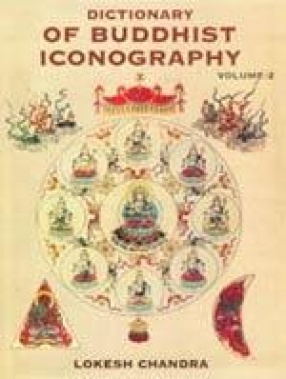
Moments of contemplation find expression in iconography. As the vision becomes vaster and cosmic moments of transcendence involve form, the inner universe works itself into art. The other shore, the insight becomes, rtambhara (Yogasutras 1.48). Living experience flows into the rhapsodic form, an access to the yonder mind of inspiration. The iconic forms are a search of the overflowing of the depths wherein images unify and perfect. This second volume of the ...
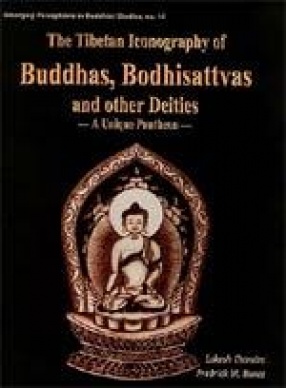
Beginning with a few aniconic symbols, like footprints, the Bo tree or stupas, in the pre-christian Indian art, Buddhism, over the centuries, came to evolve a bewildering array of deities - in ever-increasing number of pantheons. Interestingly, in Buddhism today, there are perhaps as many pantheons as there are countries, or internal regions or sects within them. Chou Fo P'u-sa sheng Hsiang Tsan, in focus here, is one of these many Buddhist pantheons and ...

The importance of Tibetan translations for the right interpretation of ancient Buddhist texts is generally admitted. These translations were always prepared by a committee composed of competent Indian pandits and a learned Tibetan translator (lotsava). The greatest care was bestowed upon the right rendering of the original. Special expeditions were sent out to India for the search of old and trustworthy manuscripts, translations were then corrected by the learned ...
